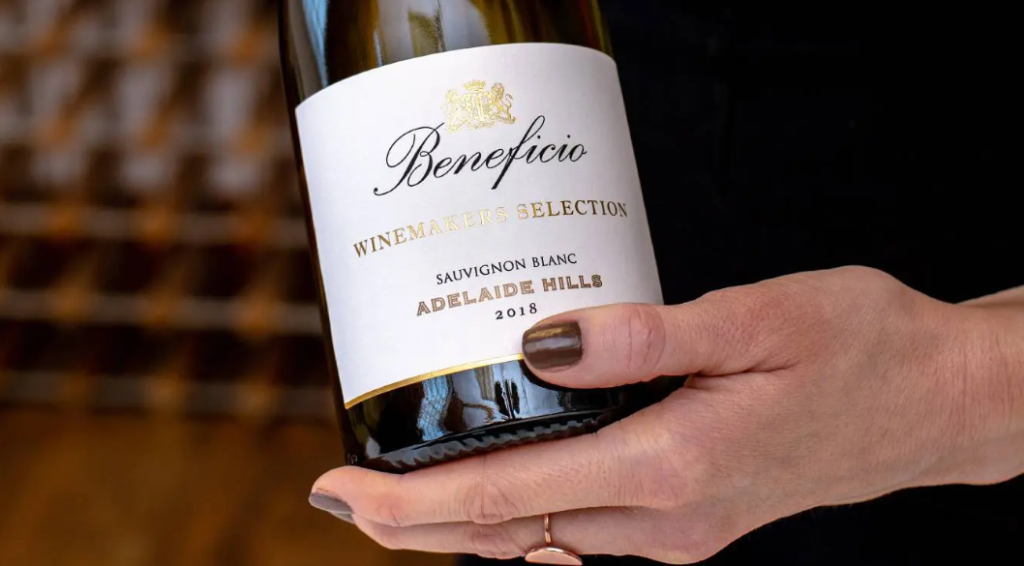Key Takeaways
- An engaging wine label balances creativity and information.
- Key elements of a label include color, typography, and imagery.
- Regulatory requirements must be adhered to.
- Sustainability is becoming increasingly crucial in wine packaging.
A wine label’s design is crucial for attracting potential buyers and showcasing the wine’s story. It conveys the wine’s essence through colors, typography, and imagery, creating an emotional connection with consumers and increasing their likelihood of choosing the bottle.
Basics to Wine Labeling
Wine labels do more than showcase the brand name; they tell a story that instantly captivates a consumer’s interest. As a retail powerhouse, these labels must seamlessly combine creativity, regulatory compliance, and information dissemination. With visual appeal as the primary goal, wine bottle labels must strike the perfect balance between aesthetic allure and providing essential details about the vintage they showcase.
Understanding the complexity behind wine label design is crucial for winemakers and consumers. An extensive study on consumer behavior highlights that most buyers spend less than 10 seconds considering label information before purchasing. This indicates how significant first impressions are, reinforcing the importance of a label that resonates aesthetically and materially with potential buyers.
Key Elements of an Effective Wine Label
A compelling wine label combines several elements. Color, typography, and imagery form the trifecta that clinches consumer interest at first sight. Color psychology in marketing plays a pivotal role, as colors can emotionally engage consumers before they read the label’s text. For instance, deep reds and metallic golds can evoke luxury and richness, qualities commonly associated with high-end wines, whereas softer, pastel hues may suggest lightness and elegance.
Typography is another integral component of label design. A wisely chosen font enhances readability and reflects the wine’s character. Scripted fonts evoke a sense of tradition and sophistication, ideal for vintage wines, while modern fonts could align with contemporary, innovative brands. Matching the visual style of typography to the wine’s target demographic strengthens brand identity and consumer connection.
Creative Design Approaches
The creativity infused in wine label design is where art meets branding. Many wineries are exploring creative avenues that break traditional barriers while maintaining essential components, resulting in distinctive labels that captivate. Techniques such as minimalism, with clean lines and expansive white spaces, can make a design appear refreshing and modern. More experimental labels incorporate bold illustrations or textural elements like embossing or foil stamping to create a tactile experience that engages sight and touch.
Creativity extends beyond visual design into storytelling. Some labels incorporate unique narratives or anecdotes, which help build an emotional connection between the consumer and the wine. This approach makes the wine stand out on shelves and encourages word-of-mouth marketing as consumers share these stories with others.
Regulations and Compliance
While creativity plays a vital role in wine label design, regulatory compliance ensures that labels also serve their fundamental purpose as a source of information. Wine labels must incorporate essential components such as origin, varietal, alcohol content, and health warnings to comply with government regulations.
Compliance is crucial for avoiding operational delays and financial repercussions, so it is essential to understand it early and balance design and compliance to avoid potential issues.
Importance of Sustainability
As awareness of environmental issues grows, sustainability is rapidly becoming a non-negotiable in modern packaging. Eco-friendly practices in wine label design and production are gaining traction, with brands increasingly leaning towards utilizing biodegradable materials and sustainable printing processes. Using environmentally conscious resources such as recycled paper or soy-based inks helps reduce the wine industry’s carbon footprint, attracting ecologically mindful consumers.
This shift toward sustainability isn’t just about meeting consumer demands and contributing positively to the environment. As wineries adopt these practices, they promote a sustainable future and align with the broader global movement toward eco-friendly consumption.

